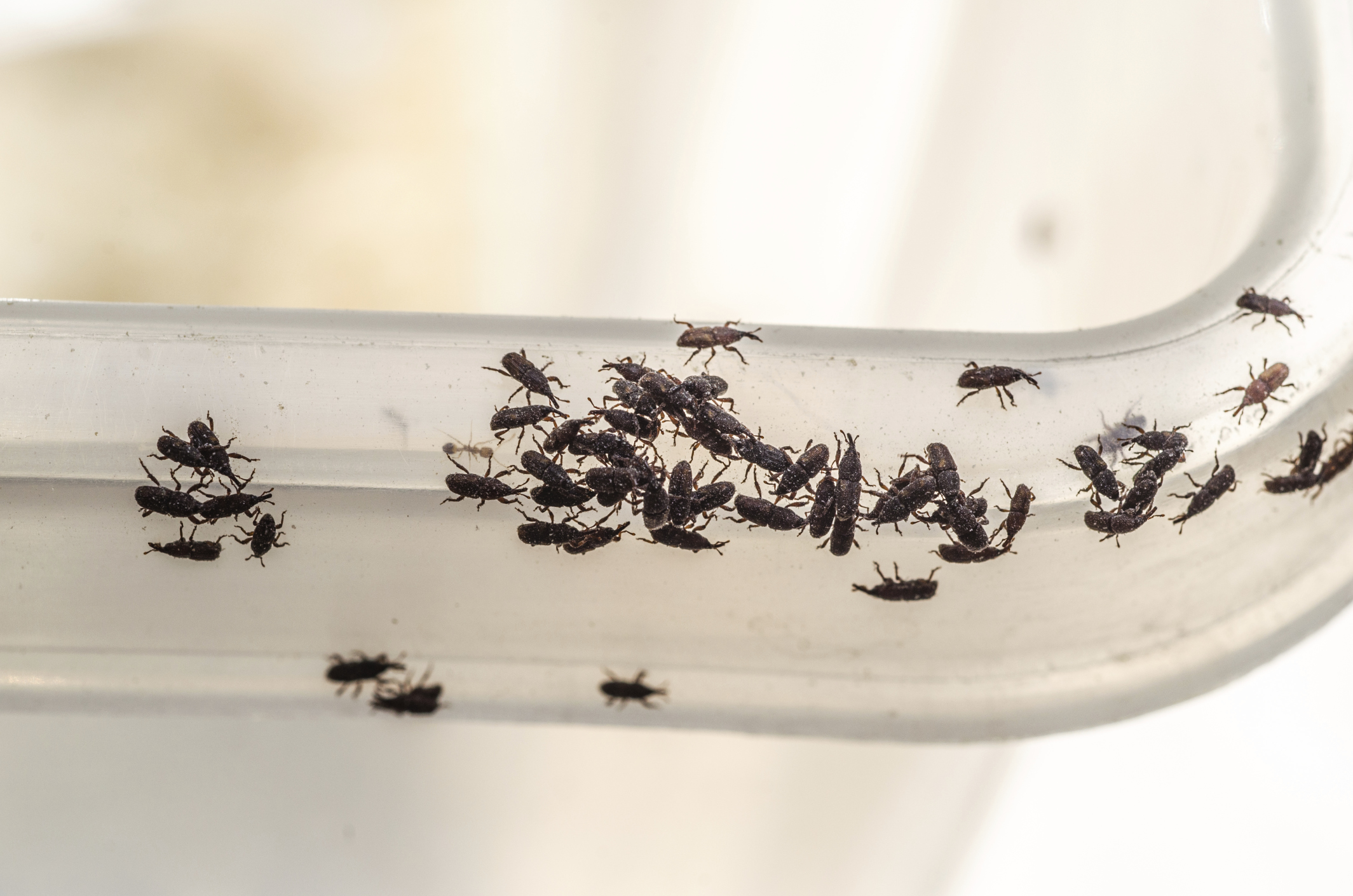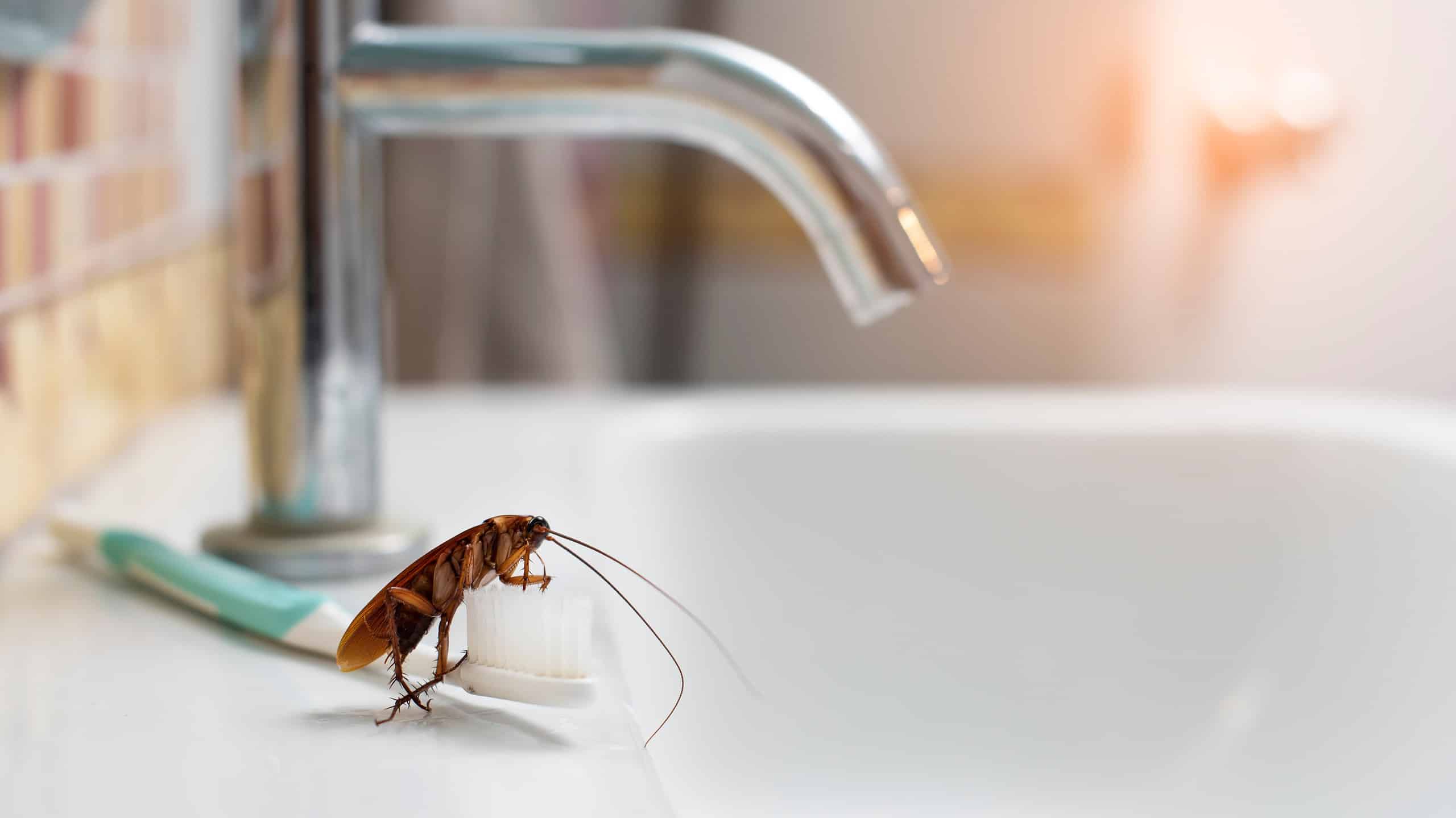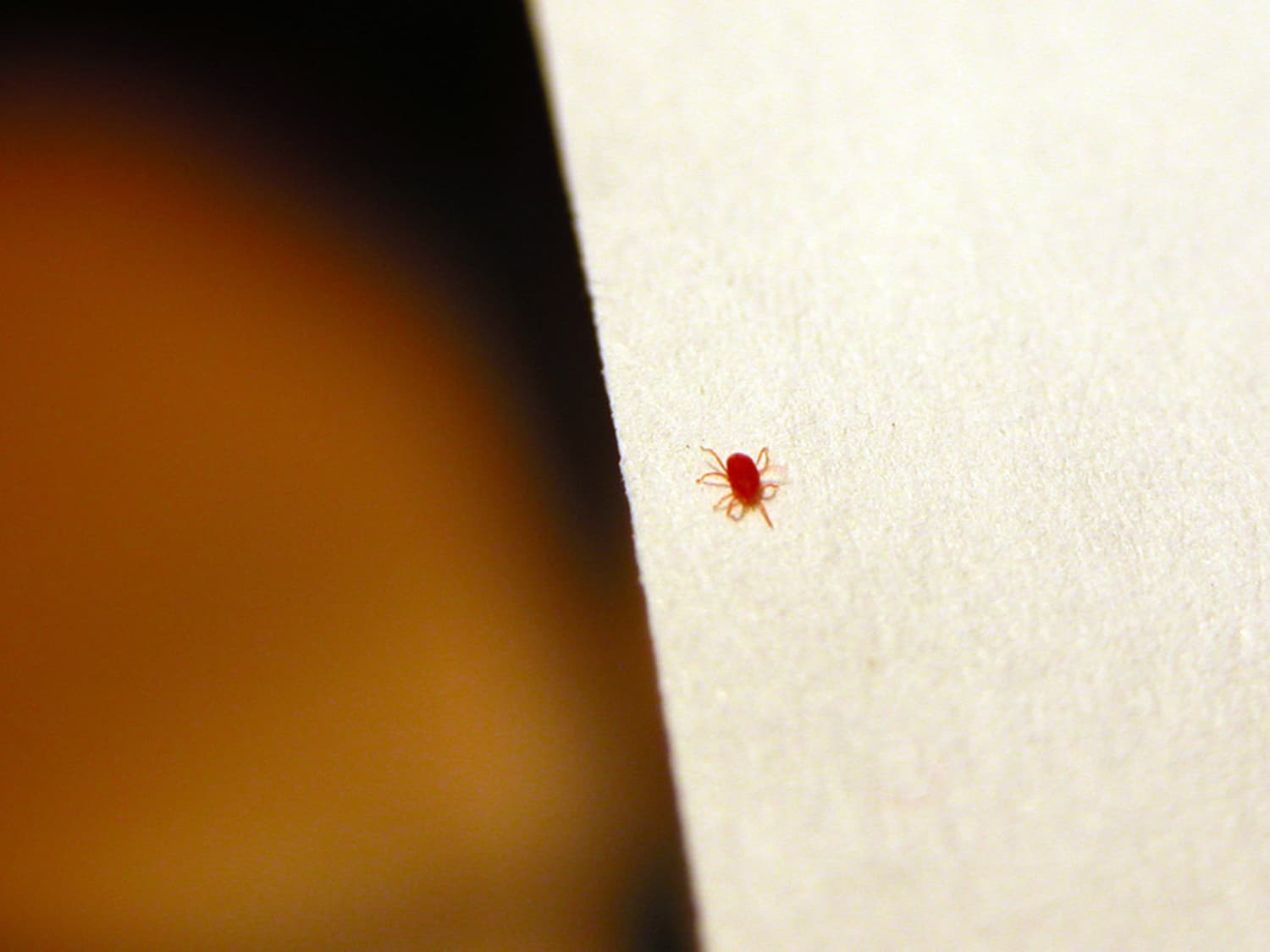Identifying the Tiny Brown Bugs

Yo, so you’ve got these tiny brown bugs in your kitchen and bathroom, and you’re like, “What the heck are these things?” Don’t worry, we’re about to break down the most common culprits and help you get rid of them.
Identifying Common Tiny Brown Bugs
Let’s get real about the most common tiny brown bugs you’ll find in your kitchen and bathroom. These are the usual suspects:
- Indian Meal Moths: These guys are about half an inch long, with wings that have a tan and reddish-brown pattern. They’re attracted to grains, flour, and other dry foods. They’re pretty good at hiding in cracks and crevices, and they can be a real pain to get rid of.
- Booklice: These are super tiny, only about 1/16 of an inch long. They’re usually grayish-brown, but can be white or yellowish. They’re super flat, which lets them hide in super small spaces. You’ll usually find them in humid areas like bathrooms and kitchens, and they like to munch on mold, mildew, and dead insects.
- Carpet Beetles: These little guys are a bit larger, about 1/8 of an inch long. They’re usually brown or black, with a fuzzy body and a slightly oval shape. They’re known for munching on fabrics like wool, silk, and cotton. They can be a real problem for your clothes and furniture.
- Drugstore Beetles: These are about 1/8 of an inch long, and they’re usually reddish-brown. They’re known for their ability to munch on a wide range of stuff, including spices, grains, dried fruits, and even chocolate. You’ll often find them in pantries and kitchens.
Understanding Bug Behavior
Okay, so you know what these little guys look like, but how do they move? What do they eat? And where do they hang out? Here’s the lowdown:
- Indian Meal Moths: These guys are pretty slow movers, but they’re good at hiding in tight spaces. They’re attracted to light, so you might see them fluttering around your kitchen at night. They like to munch on grains, flour, cereal, and other dry foods. They’re also known to eat pet food.
- Booklice: These little dudes are super slow movers, and they usually stay close to where they’re hiding. They’re attracted to moisture and warmth, so you’ll often find them in bathrooms, kitchens, and basements. They like to eat mold, mildew, and dead insects. They can also eat paper, book bindings, and other materials.
- Carpet Beetles: These guys are pretty slow movers, and they tend to stay close to their food source. They’re attracted to fabrics, so you’ll often find them in closets, under furniture, and in carpets. They like to munch on wool, silk, cotton, and other natural fibers. They can also eat feathers, fur, and leather.
- Drugstore Beetles: These guys are pretty good at hiding in tight spaces, and they’re attracted to food. They’re known for their ability to fly, so you might see them fluttering around your kitchen. They like to munch on spices, grains, dried fruits, chocolate, and other food products. They can also eat pet food.
Potential Health Risks
Yo, these bugs might be tiny, but they can still pose some health risks. Here’s what you need to know:
- Indian Meal Moths: These guys can trigger allergies and asthma in some people. They can also contaminate your food with their droppings and silk webbing.
- Booklice: These little guys are not known to bite humans, but they can cause allergic reactions in some people. They can also contaminate your food and belongings with their droppings and shed skins.
- Carpet Beetles: These guys can cause allergic reactions in some people, and their larvae can bite humans. They can also damage your clothes, furniture, and other belongings.
- Drugstore Beetles: These guys can contaminate your food with their droppings and shed skins. They can also trigger allergies and asthma in some people.
Understanding the Cause of the Infestation

Tiny brown bugs in your kitchen and bathroom can be a real pain, but understanding why they’re there is the first step to getting rid of them. These bugs aren’t just randomly appearing; they’re attracted to specific conditions that make your home a welcoming environment for them.
Food Crumbs, Spills, and Poor Sanitation
Think of your kitchen as a buffet for these tiny creatures. Food crumbs, spills, and even just a lack of regular cleaning can create a feast for them. They’re attracted to sugary substances, crumbs from bread, cereal, or even pet food. A dirty sink or countertop can also become a breeding ground for these bugs, providing them with food and moisture. You gotta keep things clean, yo!
Moisture and Humidity
These bugs love moisture, so your bathroom is a prime target. Leaks, condensation, and even just high humidity can create the perfect environment for them to thrive. They also like damp areas in the kitchen, like under the sink or around leaky pipes. So, make sure to fix any leaks and keep things dry.
Entry Points for Bugs, Tiny brown bugs in kitchen and bathroom
These bugs are sneaky and can find their way into your home through the smallest of cracks and crevices. Check around windows, doors, and even your foundation for any gaps or openings. These tiny critters can squeeze through the tiniest spaces, so it’s important to seal up any potential entry points. Think of it like locking down your house from a stealthy intruder.
Effective Control and Prevention Strategies: Tiny Brown Bugs In Kitchen And Bathroom
You’ve identified those tiny brown bugs in your kitchen and bathroom, and you’ve got a good idea of what’s causing the infestation. Now, it’s time to kick those bugs to the curb! Here’s a game plan to eliminate those creepy crawlies and keep them from coming back.
Cleaning and Sealing Potential Entry Points
Keeping your kitchen and bathroom clean is the first step to winning the bug battle. Tiny brown bugs love crumbs, spills, and food particles, so make sure you’re wiping down counters and floors regularly. Don’t forget about those hard-to-reach spots like under the sink and behind appliances.
You’ll also want to seal up any cracks or gaps in your walls, floors, and around windows and doors. These tiny critters can squeeze through the smallest openings, so patching up those entry points will make it much harder for them to get inside.

